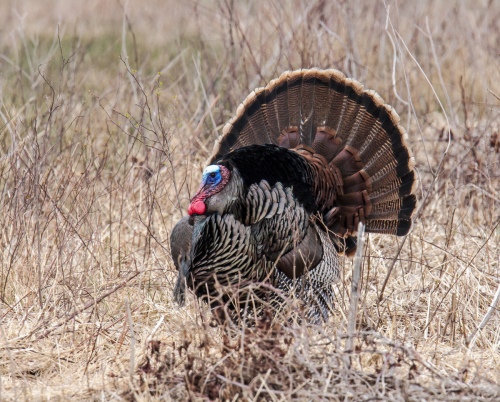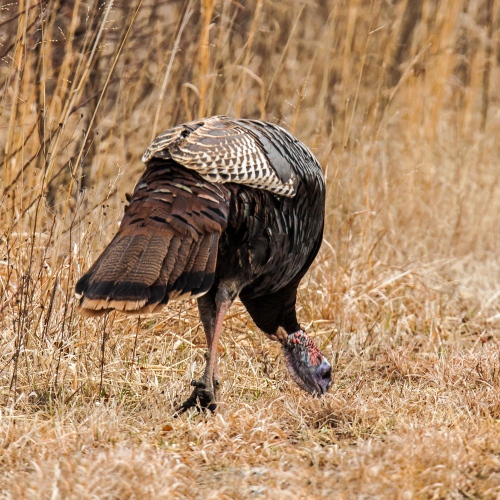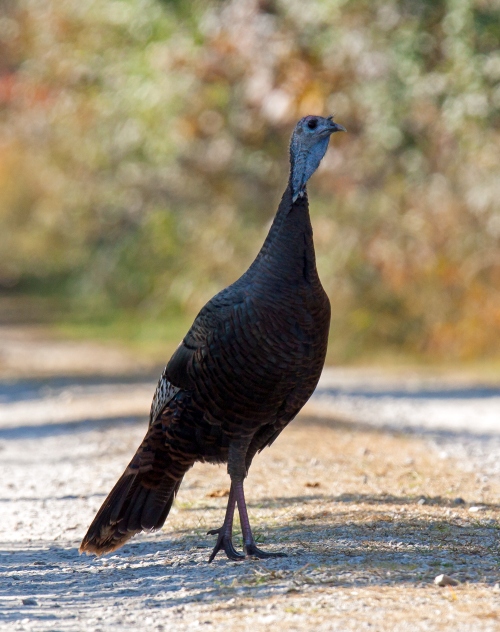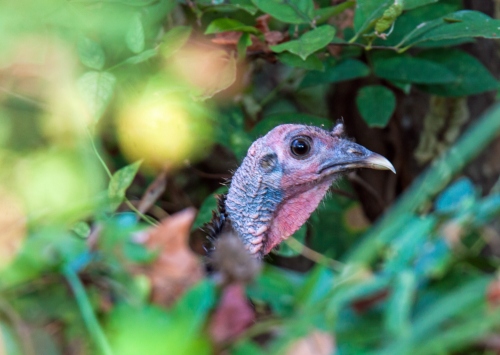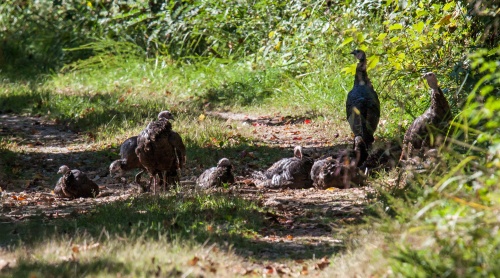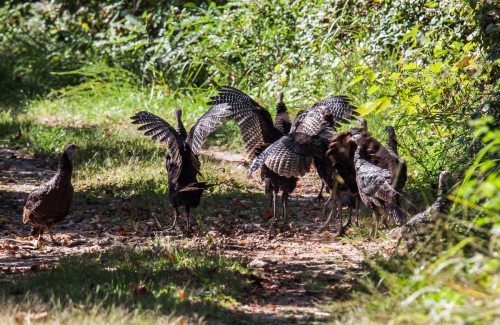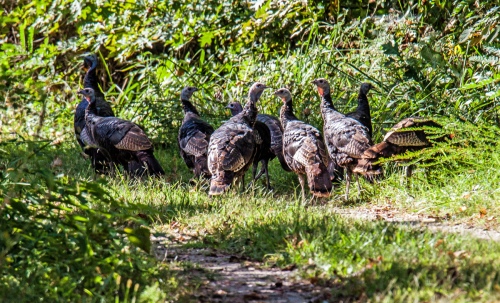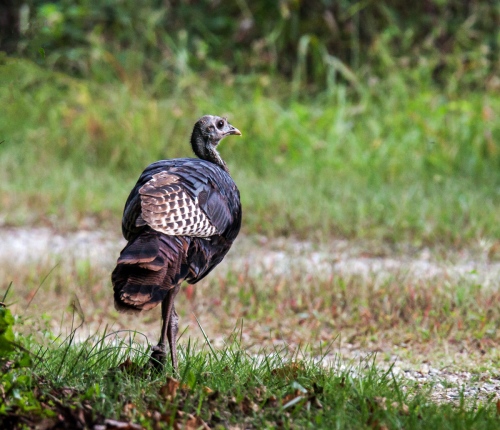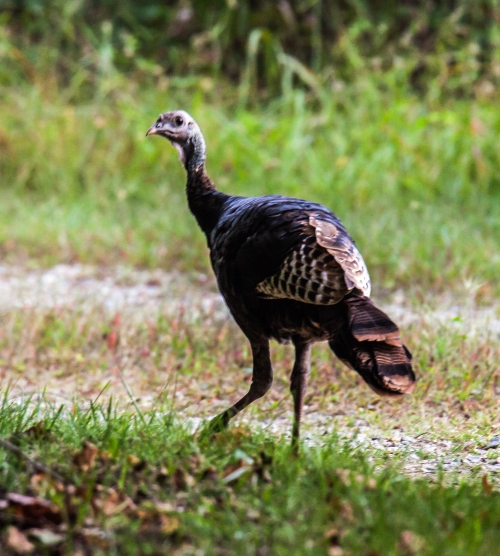I was amazed and thrilled yesterday when I spotted an impressively large male Wild Turkey (Meleagris gallopavo) putting on a showy display at Occoquan Bay National Wildlife Refuge near the edge of an open field. I suspect the lady turkeys were impressed too.
I have seen wild turkeys multiple times at this wildlife refuge, but generally it has been groups of females and their offspring. According to the Cornell Lab of Ornithology website, “Courting males gobble to attract females and warn competing males. They display for females by strutting with their tails fanned, wings lowered, while making nonvocal hums and chump sounds. Males breed with multiple mates and form all-male flocks outside of the breeding season, leaving the chick-rearing to the females.” I was not able to get close enough to hear any gobbling, but the visual display by itself was stunning.
Spring is the season for love and I will be on the lookout as more male birds try to outdo their competitors and find mates using their brilliant colors, musical calls, or elaborate courting rituals.
© Michael Q. Powell. All rights reserved.
